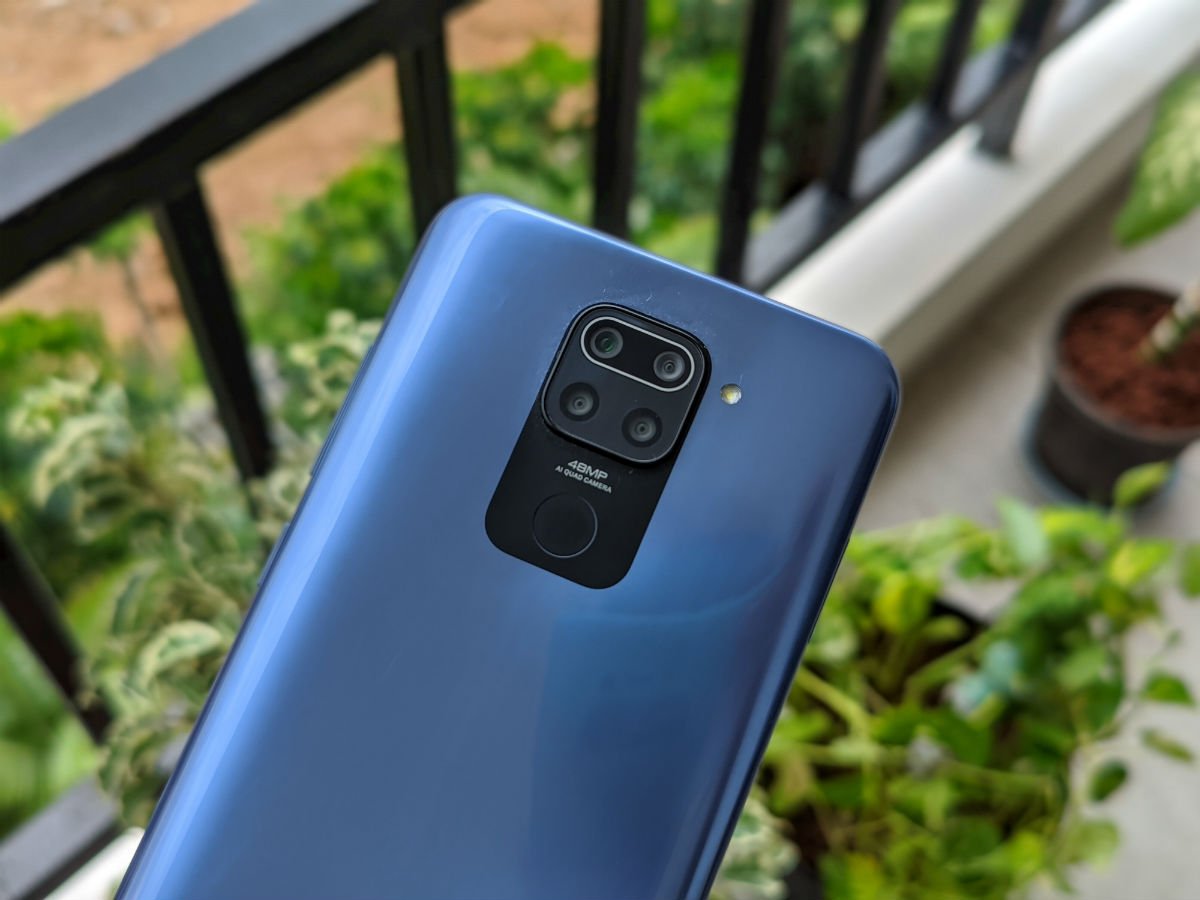Xiaomi Redmi Note 9 has been launched in India recently and the smartphone just went on for sale in the country. The Redmi Note 9 comes as a successor to the Redmi Note 8 that was launched in October 2019. The Redmi Note 8 is an incredible budget smartphone, despite Xiaomi constantly hiking its price. The Redmi Note 9 builds on the success of Redmi Note 8 and retains several features as well. The Note 9 is India’s first smartphone with MediaTek Helio G85 SoC, alongside featuring a 48MP quad-camera setup, bigger 5020mAh battery, 22.5W fast charging (available in the future) and a DotDisplay. The Redmi Note 9 is also the first non-Pro Redmi Note series phone to launch above Rs 10,000 in India and it also completes the ‘Redmi Note 9’ series as well. What does the Redmi Note 9 have on offer? Let’s find out.
Xiaomi Redmi Note 9 Hands-on: Design and Display
Design-wise, the Redmi Note 9 looks very much identical to the Redmi Note 9 Pro and Redmi Note 9 Pro Max smartphones. That said, there are some noticeable changes. Xiaomi has made a couple of changes: the company has managed to place the fingerprint scanner on the rear side right below the quad-camera module and the punch-hole sits to the top left corner of the display. Besides, the Redmi Note 9 has the same design language as the other two Note 9 series of phones.
Starting with the rear, the Note 9 sports Xiaomi’s Aura Balance design. It comes in three colour options- Arctic White, Aqua Green and Pebble Grey (the one which Xiaomi sent us for the review). The in-hand feel of the smartphone is really good and it weighs around 200 grams. The weight of the handset is distributed evenly. The weight of the Redmi Note 9 has been reduced when compared to the Redmi Note 9 Pro which weighs 209 grams. That’s largely due to the materials used by Xiaomi. Yes, the Redmi Note 9 sports a glossy plastic back panel, instead of a glass panel which we saw on the Note 9 Pro and even the Redmi Note 8. We are not sure why Xiaomi went with this decision. While Xiaomi removed the glass panel on the rear side, it still went with a glossy panel which attracts a lot of fingerprints. We can also see the quad-camera array on the back alongside a fingerprint scanner sitting right below it. The Chinese company ditched the side-mounted fingerprint scanner we saw on the Redmi Note 9 Pro and Note 9 Pro Max smartphones. The fingerprint scanner is really accurate and fast as well. The button placements are unchanged- we get the power and volume buttons on the right, SIM ejector tray to the left, USB Type-C port to the bottom and IR Blaster to the top. As for the display, we are looking at a 6.53-inch Full HD+ IPS LCD panel with 450 nits of brightness levels and no high refresh rate. There’s a punch-hole to the top-left of the screen. While I definitely would have preferred a high refresh rate screen, the Redmi Note 9 has one of the best LCD panels under Rs 15,000 in the country. The screen can get 450 nits bright.
Xiaomi Redmi Note 9 Hands-on: Hardware and Software
Xiaomi is deepening its partnership with MediaTek over the last two years. In 2019, we saw the Redmi Note 8 Pro launching with the powerful MediaTek Helio G90T SoC and we all know it is still the best performance phone under Rs 15,000. Xiaomi switched back to Snapdragon 720G SoC for the Redmi Note 9 Pro, but the company has added MediaTek Helio G85 chipset to the standard Note 9. The Helio G85 is also a gaming-focused SoC built on 12nm manufacturing process and has eight cores. The phone offers up to 6GB of RAM and 128GB of onboard storage, along with support for a microSD card slot. During my four-days of usage, the Redmi Note 9 performed really well. The software optimisation also seems to be on point, similar to the Redmi Note 8 Pro. PUBG Mobile supports up to Smooth+Ultra and it misses out on the Smooth+Extreme setting. The gameplay was good for a budget phone. Full details regarding the performance of Redmi Note 9 will be out very soon.
Similar to other Xiaomi devices launching in India, the Redmi Note 9 also boots Android 10-based MIUI 11 out of the box. While our review unit had some government-blocked apps like Mi Community and Helo, Xiaomi confirmed that the retail version would not have both the apps. Additionally, the company is also working on an OTA update which will completely remove the references to Cleaner Master app inside MIUI’ Security app.
Xiaomi Redmi Note 9 Hands-on: Cameras
The Redmi Note 9 sports a quad-camera setup on the back featuring a 48MP primary lens, 8MP ultra-wide-angle lens, 2MP depth lens and a 2MP macro sensor. Xiaomi used the 48MP Samsung ISOCELL GM2 sensor on the Redmi Note 9 Pro, but the company did not reveal whether it is the ISOCELL GM1 or the ISOCELL GM2 used on Redmi Note 9. Towards the front, there’s a 16MP selfie shooter. The camera setup is very much identical to earlier Redmi Note devices and the MIUI 11 camera app doesn’t offer anything new either. Here are few camera samples shot on the Xiaomi Redmi Note 9.
Xiaomi Redmi Note 9 Hands-on: Battery
Xiaomi has increased the battery capacity on the Redmi Note 9 by 25% when compared to the Redmi Note 8. Following the footsteps of Note 9 Pro and Note 9 Pro Max, the Redmi Note 9 also has a 5020mAh battery. And on top of that, the Indian version of Redmi Note 9 gets 22.5W fast charging support as well. Before you jump in joy, Xiaomi confirmed to TelecomTalk that the initial charging speed would be limited to 18W. The device supports 22.5W fast charge, but it will be enabled with a future OTA update after conducting lab tests. Also, there’s no ETA given for the OTA update. During my four-day moderate usage, I have charged the Redmi Note 9 only once, so there’s no doubt the phone will offer stellar battery life like the Redmi Note 9 Pro and the Note 9 Pro Max.
Xiaomi Redmi Note 9 Hands-on: Verdict
There’s no doubt the Redmi Note 9 is a stellar budget smartphone and there are not many alternatives available in the said price range. For example, the Redmi Note 8, which was launched for Rs 9,999 is now retailing for Rs 12,499. Xiaomi has made a major compromise with the Redmi Note 9. Firstly, the phone is constructed out of plastic, instead of Gorilla Glass 5 as we saw on Redmi Note 8. However, the phone delivers some stellar value with the specs like MediaTek Helio G85 SoC, 5020mAh battery, 22.5W fast charging and capable quad-camera setup. It will be interesting to see how the Redmi Note 9 fares in our detailed review. For those who are interested in purchasing a smartphone for around Rs 12,000, they can get the Redmi Note 9 without any further thinking.









